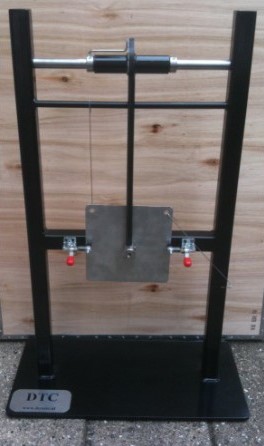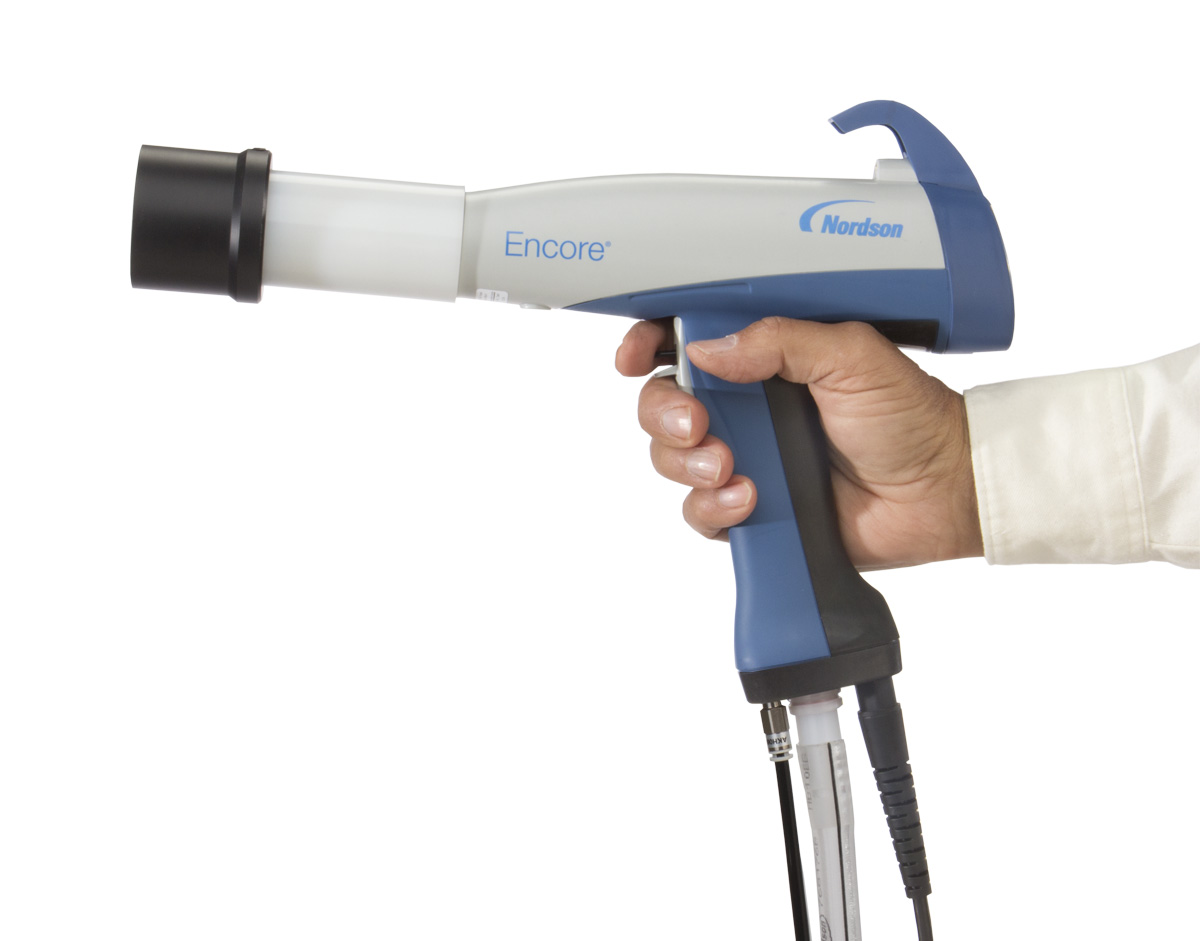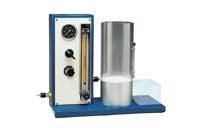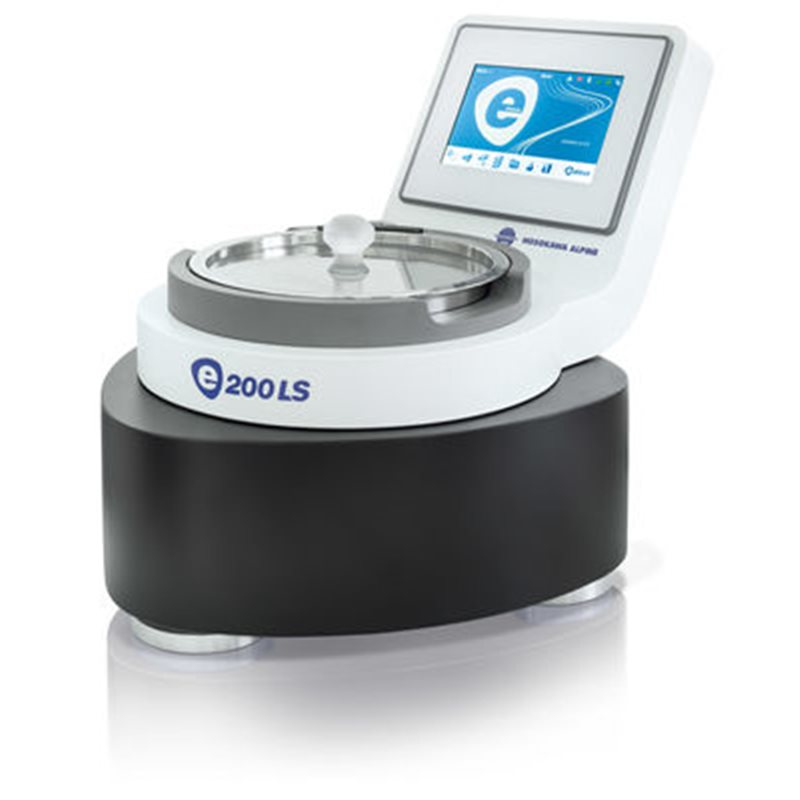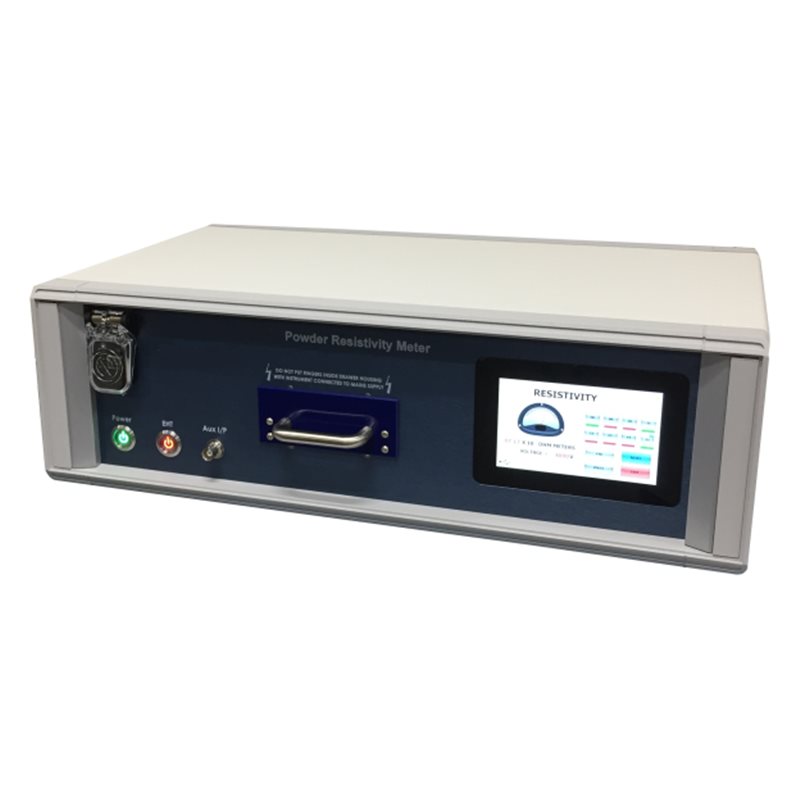Benefit from our knowledge & experience !
Testing Powder Enamel Properties
Methods & Instruments
Introduction
To maintain the reproducibility of the coating quality at your enameling plant, it is important to monitor and control all major process parameters.
With regard to the electrostatic powder enamel application department, it is necessary to keep your ambient conditions, equipment settings and powder properties within strict tolerances.
Powder enamel properties
This web page focus on testing the properties of powder porcelain enamels, which may be characterized by the following parameters :
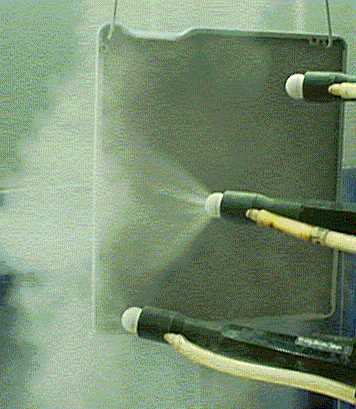
Related topics
enamel defects
enamel equipment
enameling plants
enamel processes
enamel standards
enamel technology
Test methods
Adhesion checks are most probably the best indicator of the condition of the powder.
The adhesion of a powder is usually tested by applying a normal coating on a panel at standard settings.
After a certain time interval, the panel is subjected to an impact of a controlled force, which is reproducible.
Adhesion = ( powder weight after impact / powder weight before impact ) x 100 %
According to the theory, there are two different methods :
The only difference between the STPA and LTPA method is the duration of the time interval between powder application and impact. (1 minute versus 15 minutes)
| Test result | Conclusion according to DEV |
| STPA > 75 % | Very safe for the enamelling shop |
| 75 % > STPA > 65 % | With risk for the enameling shop |
| STPA < 65 % | Insufficient for the enameling shop |
However, please note that in order to get reproducible results, it is necessary to keep the following test parameters constant :
Reference documents
Test Method
The application rate of powder is generally used to determine the rate of material transfer.
It may be measured by determining the gun output per unit of time and then using that value as a denominator for the amount of powder applied to a standard target at a given time.
Application rate = ( grams on target / grams output from gun ) x 100 %
Reference documents
Test Method
The fluidity of a powder (its ability to get whirled up in a gas stream) can be measured with a fluidimeter.The average outflow of powder in grams per sec are a good indication of a powder's fluidity.
| Fluidity | Outflow in gr/sec |
| Very good | 4.0 - 3.5 |
| Good | 3.5 - 3.0 |
| Fair | 3.0 - 2.0 |
| Insufficient | 2.0 - 0.0 |
However, please note that in order to get reproducible results with this test, it is necessary to keep the following test parameters constant :
The flowability of a powder may also be defined as the product of the following equation :
Flowability R = M x h1 / h0
where :
M is the weight of fluidized powder expelled from the side port in 30 seconds.
h1 is the height of the powder bed in the fluidized state.
h0 is the height of the powder bed in repose.
A flowability of 140 to 350 is generally recommended.
Reference documents
Test Method
The gain size spectrum has a considerable influence on its electrostatic charging and aerodynamic characteristics.
The share of coarse particles in a powder enamel can be determined by means of the Bayer
test sieve with for example a screen aperture of 0.04 mm. (= 40 mu = 16900 mesh/cm2)
The residue of powder (RP) in percentage by weight is a measure for the frequency of coarse particles.
Since the powder particle size distribution is a "normal" distribution, the one point check is usually satisfactory for determining the acceptability of a powder.
However, please note that the gain size distribution may be altered if the powder recovery at the application system is defective.
A more advanced measurement method is the use of an Alpine air jet sieve for verifying powder enamel particle sizes.
Reference documents
Test Method
Resisitivity is determined by applying high voltage on a compressed powder enamel sample and measuring the resulting current.
Reference documents
About Us
Ditmer Trading & Consulting BV is a family owned company, which was founded by Ronald Ditmer in 2007.
We are specialized in providing worldwide professional services & supplies to the porcelain (vitreous) enameling industry.
Benefit from our experience
Our Managing Director & Owner has been personally involved in 50+ industrial porcelain enameling projects since 1984, while working respectively for Ferro (Holland) BV, Smit Ovens BV, Smit Sinus Enameling BV, Nordson Corporation and/or Ditmer Trading & Consulting BV.
Company details
Ditmer Trading & Consulting BV
Palissander 141
3315MP Dordrecht
The Netherlands
Phone :
+31-78-6169877
e-mail : info@ditmer.nl
for further information and/or assistance
SITEMAP
- Enameling defects
- Enameling equipment / machines
- Enameling processes
- Enameling plants
- Spare parts for enameling plants
- Furnace atmosphere
- Energy saving
- Furnace conveyors & firing tools
- Spare parts for enameling furnaces
Palissander 141, 3315 MP Dordrecht, The Netherlands | e-mail: info@ditmer.nl | Phone : +31-786169877 | WhatsApp : +31-638-508743
